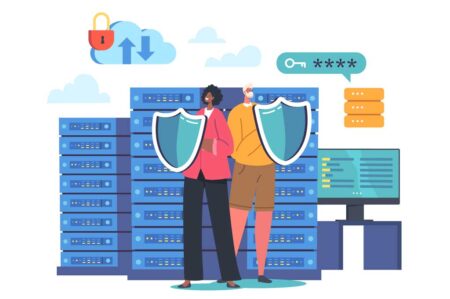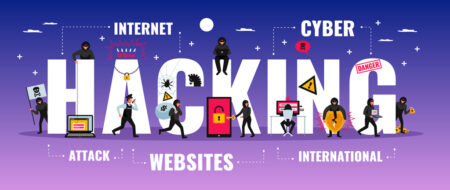With so many video conferences happening across the business world, it’s important to set up your meetings properly to ensure privacy for your company and guests.
Video conferencing has become an essential part of day-to-day business communications for many companies. Since so many employees and clients are working remotely, privacy has become a top concern for businesses in their efforts to keep their stakeholders and conversations safe.
While choosing the right video conferencing solution is a good start, it’s important for meeting organizers to understand their role in protecting the privacy of their online meetings and attendees. Here are some steps you can take to better prepare for a safe and secure video conference.
1. Keep uninvited guests out.
By default, your meetings should only allow invited guests to access the virtual meeting room. It should be difficult for uninvited individuals to interrupt or crash your meeting. Unless you have a specific reason for allowing uninvited attendees into your meeting, such as when you’re hosting a public webinar, make sure your default settings lock uninvited guests out.
2. Require a password before guests can join the meeting.
Invited guests should be required to input a meeting password to be admitted. It may seem like an unnecessary step if you have already limited guest access to invite only, but it’s an important extra layer of protection to ensure the only people who can join your video conference are invited guests.
3. Set up a virtual waiting room.
As the meeting host, you can maintain control over guest admittance and pre-meeting conversations by setting up a “waiting room” for any guests who log in before you do. This setting is especially important if you want to introduce guest speakers at specific intervals throughout the meeting. With a virtual waiting room, you have the option to invite all meeting participants at once or one at a time when you are ready for them to join.
Alternatively, you can change your video conference settings so that the meeting only begins once the host has joined the call. Waiting for the host to start the meeting is a more pleasant experience for guests, as they won’t feel pressured to engage in small talk with people they don’t know. For meetings featuring sensitive information, this practice also prevents anyone else from sharing that information before the host arrives.
4. Keep your meeting URL or dial-in information private.
If you’re hosting a public virtual event, don’t share your conference details in your marketing collateral. Let people know that they will receive the meeting link privately via email. You should also use a branded conference URL to let people know they are in the right meeting. This gives off a more professional appearance that creates a more cohesive experience with your brand across your different channels and platforms.
Keeping your URL or dial-in information private can also protect your company from inadvertently sharing private information with the public. If you control who can access the meeting and have taken measures to prevent uninvited guests, you can conduct the call with the confidence that information is being shared privately with the right people.
5. Ensure you have the proper permissions controls in place.
Don’t allow anyone to share files or present their screen without the host’s permission. At worst, bad actors could attempt to spread malicious files during your meeting, which can (and will) damage your company’s reputation. Even without bad actors in play, people who share files or present their screen at inconvenient times in the meeting can disrupt the meeting and annoy other guests.
It’s best practice to limit file or screen sharing until the host is ready for specific people to take over. This will also prevent unintentional or unnecessary distractions, resulting in more efficient meetings.
6. Require full names and video on for attendees.
Everyone who attends your meeting should have to give their full name and keep their camera on so that everyone else in the meeting can see their face. This helps you ensure the right people are in the meeting – and that no uninvited guests are posing as your employees or attendees. It also shows you that attendees are paying attention and contributing to the meeting.
Set this expectation with every guest in advance of the video call so they have plenty of time to get their meeting space in order. Once this standard is established, remind everyone to turn their cameras on at the beginning of every meeting. If necessary, remove any unfamiliar names or faces.
7. Mute all guests when you’re presenting.
Many new hosts feel uncomfortable muting guests during video conferences, but this feature is a must to conduct efficient meetings. This improves the sound quality for everyone and keeps other attendees from overhearing any background conversations or distractions on your attendees’ ends. More importantly, it prevents people from talking over one another, which is a notorious video conferencing issue that creates awkward pauses or upsets guests.
As the host, you have the option to unmute individuals as they raise their hands, or you can allow participants to unmute themselves when they have something to contribute. Whether you allow attendees to unmute themselves or not, be prepared to use the mute button in case someone forgets to do it themselves.
8. Prepare your screen-sharing window before the meeting.
Before starting any meeting in which you expect to share your screen, double-check that every program, app, or file you need is ready and, more importantly, all unwanted programs are closed. The last thing you want to do while sharing your screen is log in to a service, such as your mail client, for all your attendees to see. Not only can this be a security issue, but it also distracts from the purpose of the meeting and wastes time.
During the meeting, share one window at a time and hide any file names, bookmarks or other sensitive information that might be on display when you’re sharing your screen. If you have a multi-monitor setup, do a practice run before your meeting to ensure everything is in working order.
A common practice among video conference hosts is to use one monitor as a sharing screen, while other monitors are used to store any additional information, such as the meeting agenda, additional notes, or any program or file that you plan on sharing during the presentation.
As soon as you are done presenting your screen, turn screen sharing off immediately so you don’t inadvertently share sensitive or private information. If necessary, you can always start sharing your screen again.
9. Always use a video conferencing solution with built-in privacy and security features.
If your current video conferencing tool doesn’t allow you to do any of the above, consider upgrading your solution to one with robust meeting privacy options. Look for a platform that has essential security features such as password-protected meetings, virtual waiting rooms, and comprehensive file- and screen-sharing permissions.
Vast Conference offers a wide range of scalable conferencing solutions to meet the needs of any size of business. Compare plans or contact us to start your free 14-day trial.


